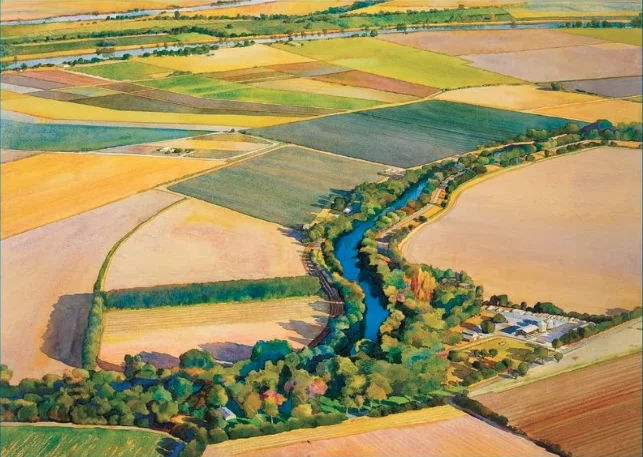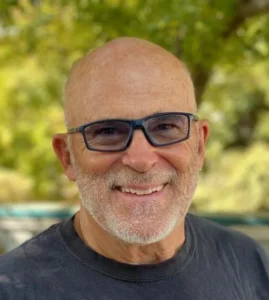By David Guy, NCWA President

In his book LifePlace: Bioregional Thought and Practice, U.C. Davis Professor Robert Thayer offers a powerful framework for how we can live more meaningfully and sustainably by reconnecting with the places we inhabit. His central idea is that a “life-place” is more than just geography—it is a living system where economy, ecology, culture, and identity converge. By rooting ourselves in place, we can create communities that are resilient, creative, and aligned with the natural rhythms of the land, water, and sun.
What Is a LifePlace?
Thayer defines a life-place as a region where people consciously live within the ecological limits of their surroundings, while celebrating the cultural distinctiveness that grows out of those landscapes. It is an antidote to rootlessness, sprawl, despair, and homogenization. A life-place is where:
- Local water, soil, plants, animals, and the sun form the basis of life.
- Human activities harmonize with seasonal cycles and natural systems.
- Cultural traditions, stories, and practices reflect the identity of the land itself.
This is not nostalgia, but a forward-looking vision: life-places are where innovation meets deep respect for working lands and ecological context.
The Sacramento Valley as a LifePlace
The Sacramento Valley is a textbook example of what Thayer envisioned. This rich agricultural plain, nourished by the Sacramento River and its tributaries, has sustained both natural abundance and human communities for thousands of years. The Valley’s unique qualities make it a vibrant life-place:
- Water as lifeblood: From snowmelt-fed rivers to managed wetlands, water defines life in the Valley. How we steward this precious resource—balancing cities, farms, and fish—determines the region’s future.
- Agricultural abundance: The Valley is one of the most productive farming regions in the world, producing rice, nuts (almonds, walnuts, and pistachios), tomatoes, other field crops, seed crops, alfalfa and more. Farming here is not just the economic backbone—it is a working ecological landscape that is ingrained in the culture, shaping generations of families and communities.
- Ecological richness: Migratory birds along the Pacific Flyway, winter-run salmon in the Sacramento River, and oak savannas all anchor the Valley’s natural identity.
- Cultural connections: From Native Californian stewardship to today’s diverse agricultural and urban communities, the Valley has always been a rich mosaic and crossroads of people and cultures rooted in land, water, and sun.
Applying LifePlace to the Sacramento Valley
Thayer’s vision challenges us to think holistically about the Sacramento Valley—seeing it not as a set of competing interests, but as one interconnected life-place. That means:
- Water Stewardship as Shared Identity: Managing rivers and creeks, groundwater, and wetlands is not just technical policy—it is cultural practice. Programs like Healthy Rivers & Landscapes reflect this shift, focusing on balancing ecological health with working landscapes.
- Working Lands as Ecological Allies: Rice fields that serve as surrogate wetlands for migrating birds and salmon, or alfalfa that provides habitat for pollinators, are examples of agriculture supporting biodiversity. This “mimicry of nature” is pure life-place thinking.
- Community Identity and Storytelling: Celebrating the Valley through local food, art, and heritage keeps people connected to place. This storytelling is as vital as water or soil in sustaining a life-place.
- Resilience in a Changing Climate: By grounding ourselves in the Valley’s ecological realities—its water cycles, soils, and habitats—we can adapt more wisely to extreme drought, floods, and shifting seasons.
Conclusion: Rooting Ourselves in the Valley
Robert Thayer’s LifePlace calls us to live not on the land, but with it. In the Sacramento Valley, this means recognizing that our future—whether in farming, cities, or ecosystems—depends on embracing our shared place. By weaving together ecological health, cultural vitality, and sustainable livelihoods, the Sacramento Valley can be a life-place for California and beyond.
If you have additional thoughts on the Sacramento Valley and LifePlace, we would appreciate your ideas. Please share them with us at info@norcalwater.org.

For more about Robert Thayer, his vision of LifePlace, and to celebrate his legacy in the Sacramento Valley, see the following:
When we talk about sustainability today, the conversation often drifts toward global issues—climate change, carbon footprints, or worldwide supply chains. But Robert L. Thayer Jr., a professor, author, and visionary landscape architect, urged us to start closer to home. He believed that the key to a sustainable future lay not in abstract global strategies, but in how we live in—and with—the places that sustain us.
A Teacher of Place
Robert Thayer (1935–2016) spent much of his career at the University of California, Davis, where he co-founded the Landscape Architecture Program. His students remember him as someone who could weave together ecology, design, and human meaning. In the classroom, he was less interested in technical formulas than in helping people see landscapes as living systems—places where water, soil, plants, animals, and culture intersect.
From Gray World to Green Heart
Thayer’s first major book, Gray World, Green Heart (1994), captured a tension that still resonates today. He argued that modern life had been overtaken by a “gray world” of technology and consumption, yet our survival depends on the “green hearts” of landscapes that keep ecological systems intact. The book was both warning and invitation: a call to protect the green foundations of life while rethinking how we design and inhabit our environments.
LifePlace: Rooting Ourselves in Place
His most enduring contribution came in LifePlace: Bioregional Thought and Practice (2003). Here, Thayer introduced the idea of a “life-place”—a geographic region where people consciously live within the ecological limits of their surroundings, while drawing meaning and identity from the land itself.
To Thayer, a life-place is not just a map location. It is a living whole, where:
- Local water, soil, and climate shape culture and economy.
- Human activities align with the seasonal rhythms of nature.
- Communities tell stories and create traditions that grow directly from the land and waters around them.
In an era of globalization, where fast food and big box stores make one town look like the next, Thayer’s vision was profoundly countercultural. He called us back to belonging, to finding identity in our bioregions, and to designing lives that honor the ecological context of where we live.
Influence and Legacy
Thayer’s ideas struck a chord with environmentalists, planners, and community leaders who were seeking a deeper way to think about sustainability. His writing helped shape bioregionalism—the movement that grounds human life in the unique ecological and cultural features of a region.
More than a decade after his passing, his work continues to influence how we talk about resilience and sustainability. Whenever a community works to align agriculture with ecological health, or celebrates its local food and culture as part of its identity, it is echoing Thayer’s call to reinhabit our life-places.
Why It Matters Now
Robert Thayer’s vision reminds us that the path to a sustainable future is not only about technology or policy, but about rootedness. If we learn to see our rivers, soils, and communities as part of who we are, sustainability becomes less of a task and more of a way of life.
In his own words, Thayer believed that every region has the potential to become a life-place—a source of sustenance, belonging, and meaning. The challenge he left us is simple but profound: to live in ways that honor the places that give us life.




